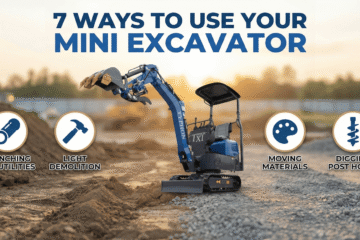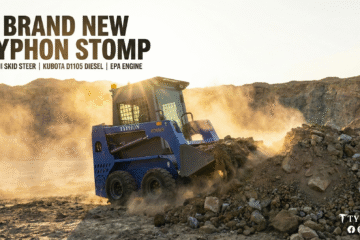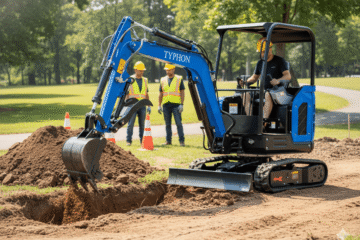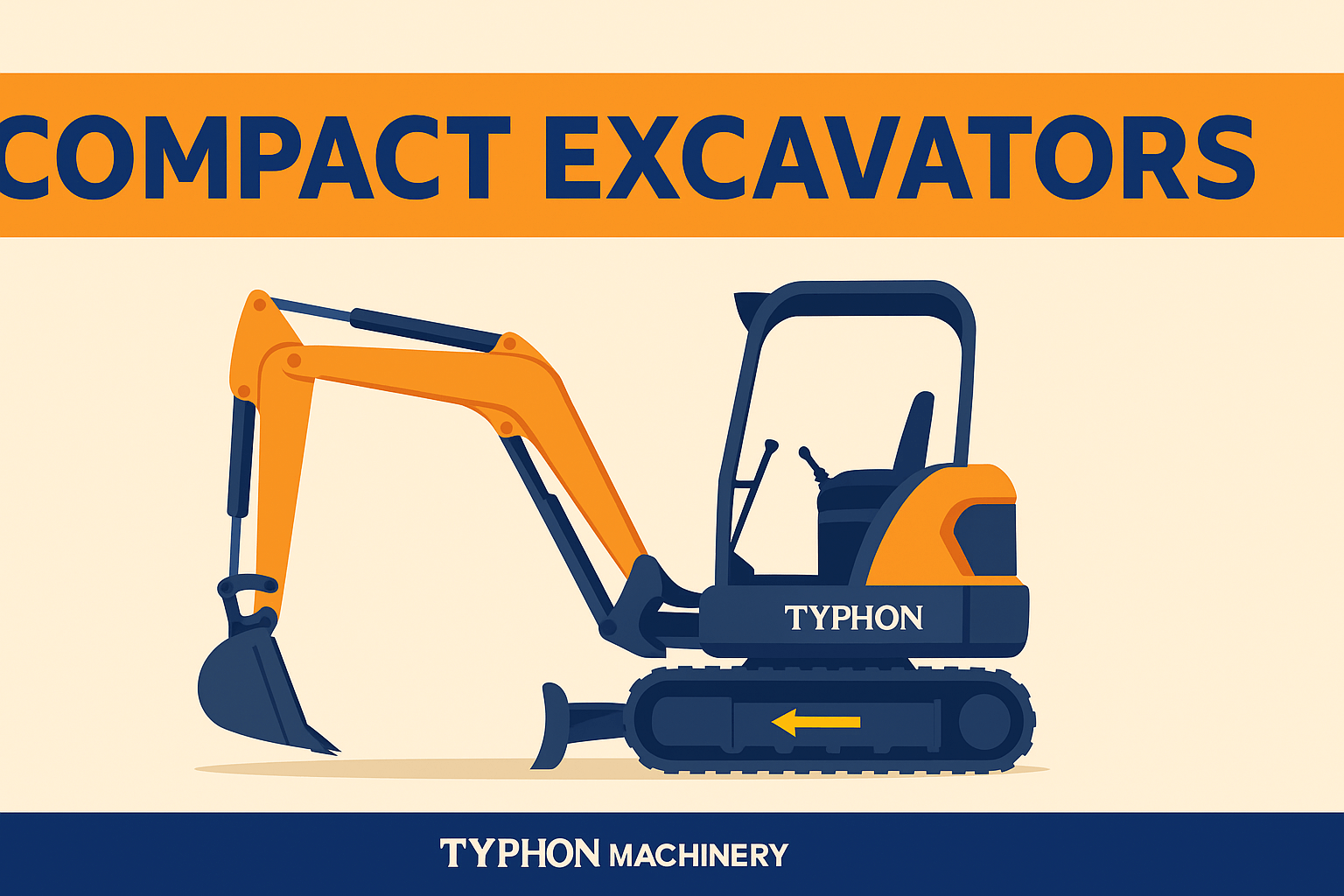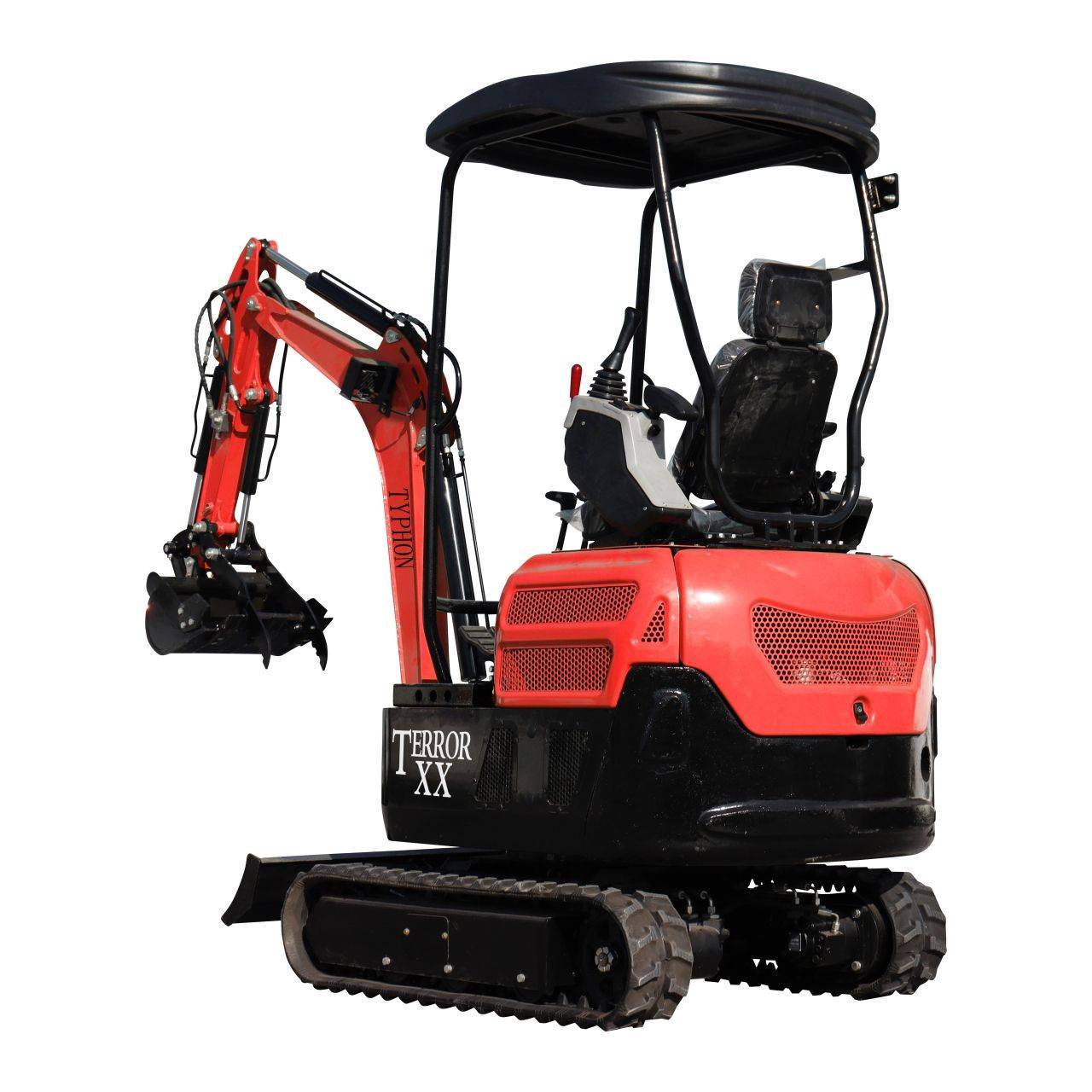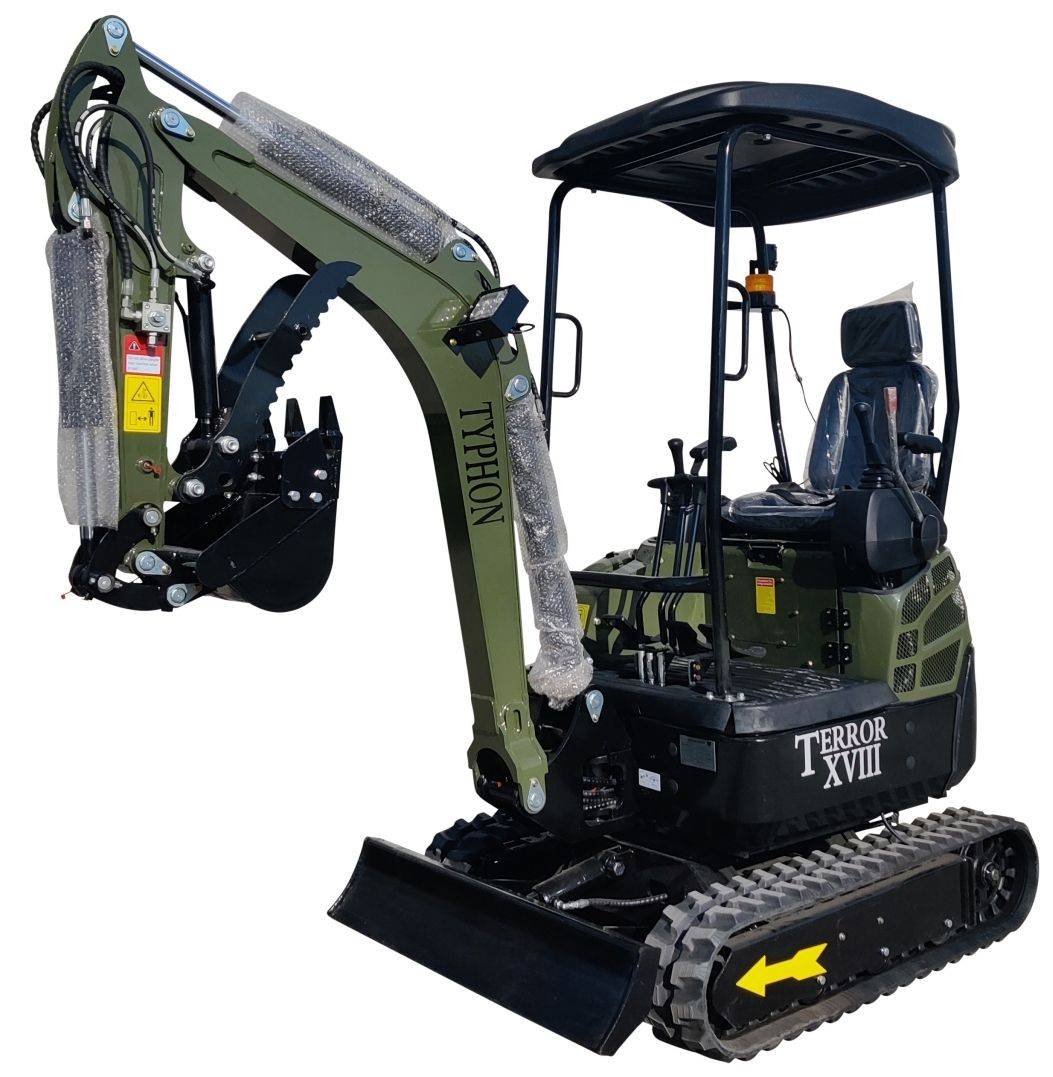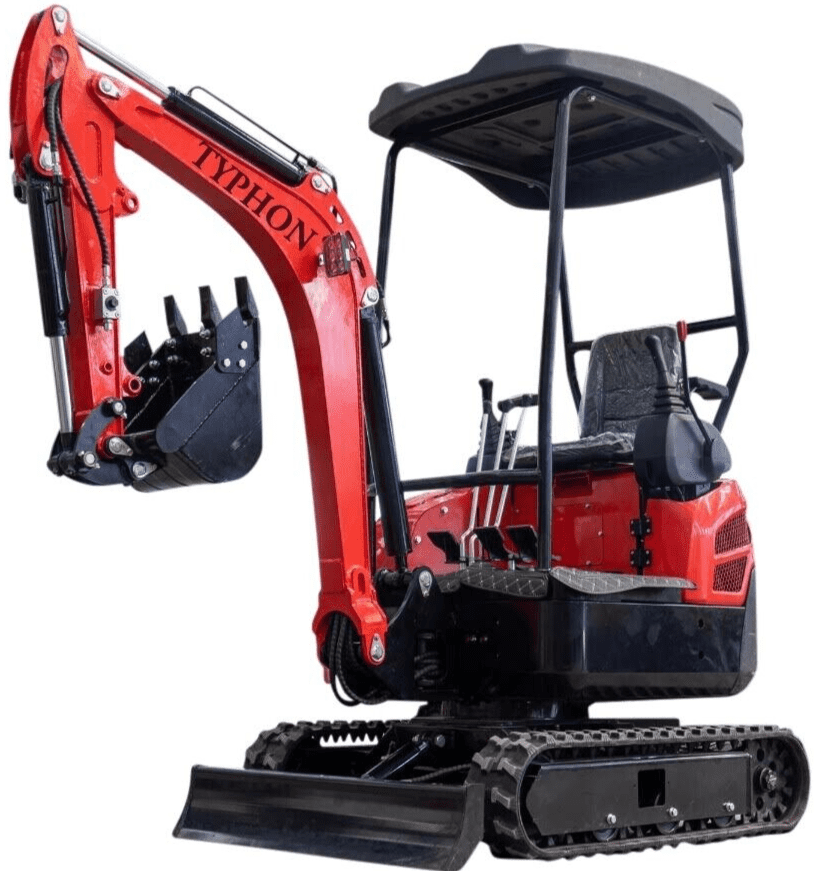
Backhoe Loader Safety Tips
Safety First Backhoe Loader Safety Tips You Need to Know
Regardless of your level of expertise with operating backhoe loaders, it’s always crucial to keep current with safety precautions for backhoe loader operation. To avoid mishaps, even those who have been running loaders for years sometimes need a refresher.
Safety begins with fully knowing how your equipment operates and what its capacity is. Before using your machine, make sure you carefully go over your Operation and Maintenance Manual; as you get more experienced, go back often. Further thorough advice for properly running a backhoe loader to avoid mishaps and maintain equipment in good running order is below.
Within the busy world of building, where accuracy and efficiency rule, the backhoe loader is a flexible powerhouse. Still, its great powers also come with great responsibilities for guaranteeing safety. Construction workers, site managers, and safety officials who realize safety is not just a concern but also a basic component of their everyday activities might find this blog article useful. We will cover the fundamentals of backhoe loader safety, from the most frequent incidents and how to avoid them to pre-operational safety checks and the need of continuing training. This will help your site to be efficient and safe.
Introduction to the Importance of Backhoe Loader Safety
Mostly dependent on machinery, the construction sector makes use of backhoe loaders among the most often used tools. Crucial for jobs ranging from excavation to material handling, this equipment naturally carries hazards that need to be controlled to stop injury and death. Knowing backup loader safety is about saving lives and guaranteeing the seamless running of building sites, not just about compliance.
Always the first concern should be safety. Still, realizing safety calls for dedication from all spheres of a building project. Ground-based workers, site managers, and safety officials all help to build a culture wherein safety permeates all facets of employment. Teams may greatly lower the possibility of mishaps by knowing the special hazards related to backhoe loaders and putting thorough safety precautions into use.
A good safety plan mostly depends on awareness and education. Workers who are aware of such risks and armed with the information to prevent them will be more capable and effective in completing their jobs. This article seeks to provide building experts with useful insights and doable advice they may use right now to improve backhoe loader safety on their sites.
Common Backhoe Accidents and How to Prevent Them
Backhoe loaders may cause rapidly occurring, catastrophic accidents. Preventing accidents mostly depends on knowing the kinds that usually happen. One of the most common events, rollovers, might result from running the loader on uneven terrain or from turning too abruptly at high speeds. Training operators to identify unstable terrain and modify their driving will help to avoid rollovers.
Another often occurring mishap is coming into contact with electricity wires or overhanging buildings. Extreme structural damage or electrocution may follow from this. Operators should carefully evaluate the working surroundings before starting their jobs to find any possible risks, such as low-hanging objects or electricity wires. Equipment should be run far from these buildings, and operators have to be continuously alert of their surroundings.
Moreover, poor visibility might lead to collisions with other equipment, buildings, or people. Crucially is making sure the operator has a good line of sight and that cameras and mirrors are in best functioning order. Site workers should also dress in high-visibility gear and create marked pedestrian lanes to prevent staff members from running into moving equipment.
1. Conduct Walk-Around Inspections
Developing the practice of pre- and post-operation inspections is really vital. Make sure all parts of your backhoe loader are in safe working order by carefully walking around before running it.
Under the hood is the first inspection point. Examine fluid levels, including hydraulic, engine, transmission, and washer fluids. Search beneath the machine for any leaks that may suggest a problem. Every so often, you should also check your engine air filter—either by hand removal or by looking at the indication if your specific model has one.

An external inspection checking for cracks and any damage to the bucket or work tool attachment comes next. Don’t overlook looking over your wheels for damage and checking your tire pressure. Get inside the cab and check the lights and controls are functioning as they should.
2. Ensure Loader Stability
Two stabilizer legs built behind the rear wheels are standard on backhoe loaders. These appendages aid in stabilizing the machine during operation, therefore minimizing excessive weight shifting when loading on steep ground or near buildings.
The stabilizer legs of your machine should be correctly tuned. If you see swaying or looseness, tighten the stabilizer bolts to provide security. Steer away from placing your loader on uneven or loose ground and from turning or pivoting while the machine is inclined.
Always follow the maximum load capacity that the manufacturer rates for the equipment. Always make sure the boom is lifted, centered, and tucked in place to provide total counterbalance weight throughout movement of the backhoe loader.
3. Be Aware of Surroundings
Developing the habit of continuously observing the terrain and seeing any risks can help you to be aware of your surroundings. Here are several risks worth noting:
- individuals: When many individuals are operating near machinery, pinch-points are among the worst risks. Whether using hand signals or a two-way radio, it’s important to be aware of close colleagues and have a strategy of continual communication if you are working among others.
- Systems: Find out how close you are to other buildings, cars, or equipment. Always have a spotter or good view of what is behind you while backing up.
- Always be sure what is above when you raise the boom of your equipment. Particularly pay close attention to any overhead electricity wires you could come across or tree limbs you might grab.
- Underground: Never dig without knowing exactly what is underfoot. Ask your neighborhood utility providers to be sure no wires or pipes run under you.
4. Wear Personal Protective Equipment
If you want to guarantee you run a backhoe safely, personal protection equipment (PPE) is not optional. PPE is meant to be your final line of protection against possibly dangerous situations. Safety risks surround us, from flying trash to item strikes. Since PPE saves lives, it’s essential to have and use the correct gear whenever you run any kind of heavy equipment.
OSHA’s recommended basic PPE equipment for any construction or industrial personnel operating near heavy machinery are:
- Hardhat: shields you from pinch-points and falling items.
- Safety eyewear shields your eyes from flying particles.
- A high-visibility vest or clothes shields you from other tools and materials striking you.
- Safety or steel-toed shoes protect your feet from heavy or sharp items and help prevent slipping, tripping, or toe stubbing.
Always make sure you keep three points of contact anytime you enter and leave the cab and fasten your seatbelt while running your backhoe loader.
5. Stay on Top of Preventive Maintenance
Extended life of your investment and guaranteed complete operating safety depend on preventative maintenance. See your manufacturer’s recommended preventative maintenance regimen. Standard maintenance intervals advised by equipment manufacturers Some maintenance tasks must be completed after a designated operating hour count.
Changing engine oil and air filters, as well as hosing and belt replacement, are basic preventative maintenance chores. Proper storage of tools between usage also helps to shield your machine from additional wear and tear and environmental damage.
Pre-Operational Safety Checks for Backhoe Loaders
A comprehensive pre-operational safety inspection is crucial to find any problems before operations that can cause equipment breakdowns or accidents. The first stage is a visual assessment of the machine for any obvious wear or damage like leaks, cracks, or loose components. Examining the tires for appropriate pressure and damage is also very important, as tire problems may compromise handling and stability.
To guarantee the equipment runs as it should, fluid levels—including engine oil, hydraulic fluid, coolant, and fuel—should be monitored and topped up as needed. Low fluid levels could cause machine breakdowns or overheating, therefore endangering efficiency and safety. Training operators to identify any odd sensations or sounds during the first operation can help them spot mechanical problems.
Before any work starts, evaluating all safety devices and controls is very crucial. This covers making sure alarms, lights, horns, and brakes are operating as they ought. To save the operator in the case of an accident, safety elements like seat belts and rollover protection structures (ROPS) have to be in place and functioning. Regular pre-operational inspections assist in guaranteeing that any problems are fixed before they become safety concerns.
Safety Practices for Safe Operation of Backhoe Loaders
Operating a backhoe loader safely calls for a mix of alertness, dexterity, and respect of safety standards. Keeping a safe operating speed is one basic habit, particularly when negotiating tight areas or on uneven ground. Operators should modify their pace to fit the situation and be alert for environmental changes like additional hazards or staff members walking into the area.
Another very vital element of safe operation is communication. To coordinate movements and prevent misinterpretation, operators should set unambiguous communication signals with ground personnel. Two-way radios, hand signals, or other communication tools serve to guarantee everyone is in agreement and reduce the possibility of mishaps resulting from poor communication.
Furthermore, operators should be taught the equipment’s load limitations and the need for appropriate weight distribution during loading and unloading processes. Improperly balancing the weight or overloading the bucket could cause instability and raise the tipping danger. Maintaining safety depends on operators knowing the capabilities of the equipment and working within those limitations.
Tips for Safe Backhoe Loader Maintenance
Backhoe loaders must be routinely maintained if their safe and effective running is to be guaranteed. Since hydraulic hoses and fittings are important parts influencing the machine’s operation, scheduled maintenance inspections should involve looking for leaks or wear on them. Changing tired hoses right now helps avert hydraulic breakdowns that could cause mishaps.
Maintaining the equipment in cleanliness and clear of trash is yet another crucial maintenance chore. In important places like the engine compartment or undercarriage, dirt and grime may gather and can cause mechanical breakdown or overheating. Frequent cleaning lowers the chance of malfunction and helps the equipment last as it should.
Maintaining proper maintenance records is thus very vital for spotting trends or reoccurring problems that could point to underlying causes. Recording all maintenance operations, repairs, and inspections helps site managers to properly plan preventative maintenance and monitor the state of the equipment Good maintenance guarantees that backhoe loaders remain dependable and safe for use.
Regulatory Guidelines for Backhoe Loader Safety
Maintaining safety standards on building sites depends on following legislative rules. Organizations like the Occupational Safety and Health Administration (OSHA) provide particular policies for the safe running of backhoe loaders, along with criteria for training, equipment inspection, and danger communication. Following these rules helps guard employees and helps avoid expensive penalties or legal problems.
OSHA and other pertinent agencies demand that operators be certified in the safe usage of backhoe loaders and trained as well. Training courses should include safety procedures, equipment functioning, and emergency responses so that operators are ready to manage any scenario that could develop on the workplace.
Moreover, site managers and safety guards should be updated on any revisions in industry standards and laws. Reviewing and updating safety rules and practices on a regular basis guarantees that the building site stays compliant and that every employee understands their obligation in preserving a safe working environment.
Conclusion with an Emphasis on Continuous Safety Training and Improvement
Safety in backhoe loaders is a continual dedication needing constant training, awareness, and a proactive attitude to development. Although knowing and putting safety precautions into use is vital, developing a culture of ongoing education and adaptation is just as critical. Regular safety training courses and seminars should be urged of workers so they may remain current on best practices and new technology.
Stressing the need for safety not only guards employees but also improves general efficiency and output on building sites. Workers who give safety first priority feel more confidence in their duties, which improves performance and lowers downtime resulting from equipment breakdown or accident occurrence.
The secret to guaranteeing backhoe loader safety is ultimately worker, site manager, and safety officer cooperation. Working together and sharing expertise can help building teams produce a safer, more effective workplace that advantages all those engaged. Many tools and websites provide insightful analysis and help cater to the demands of construction professionals for individuals wishing to enhance their knowledge of building safety.

